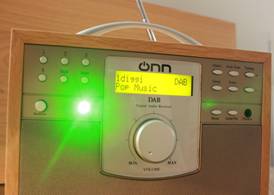Radio advertising
 Radio listening has recently enjoyed a renaissance as the methods for listening have expanded considerably and the number of stations available have proliferated. Apart from the portable radio, car radio and radio found in other music systems, consumers can listen online and through internet radios. Governments around the world are promoting Digital Audio Broadcasting (DAB) systems as they seek to move television viewers and radio listeners to accept digital broadcasting.
Radio listening has recently enjoyed a renaissance as the methods for listening have expanded considerably and the number of stations available have proliferated. Apart from the portable radio, car radio and radio found in other music systems, consumers can listen online and through internet radios. Governments around the world are promoting Digital Audio Broadcasting (DAB) systems as they seek to move television viewers and radio listeners to accept digital broadcasting.
Radio advertising is significantly cheaper than television advertising, because audience size tends to be much smaller. The peak times for listening to the radio are the morning and evening. Unlike television, the radio is often an accompaniment to some other activity such as eating, driving or getting up, which means that the listener's attention may not always be on an advertisement.
Advantages of radio advertising
- Can be effectively targeted geographically through local radio stations
- Some targeting is possible though analysis of the profile of listeners
- Relatively inexpensive (particularly against TV advertising)
Disadvantages of radio advertising
- As with TV and some print media, adverts will have a relatively short life and full campaigns may be required to catch consumer attention
- All auditory and no visual stimuli - no images are possible to differentiate one product from another
- Can be difficult to stand out and grab people's attention given nature of radio listening